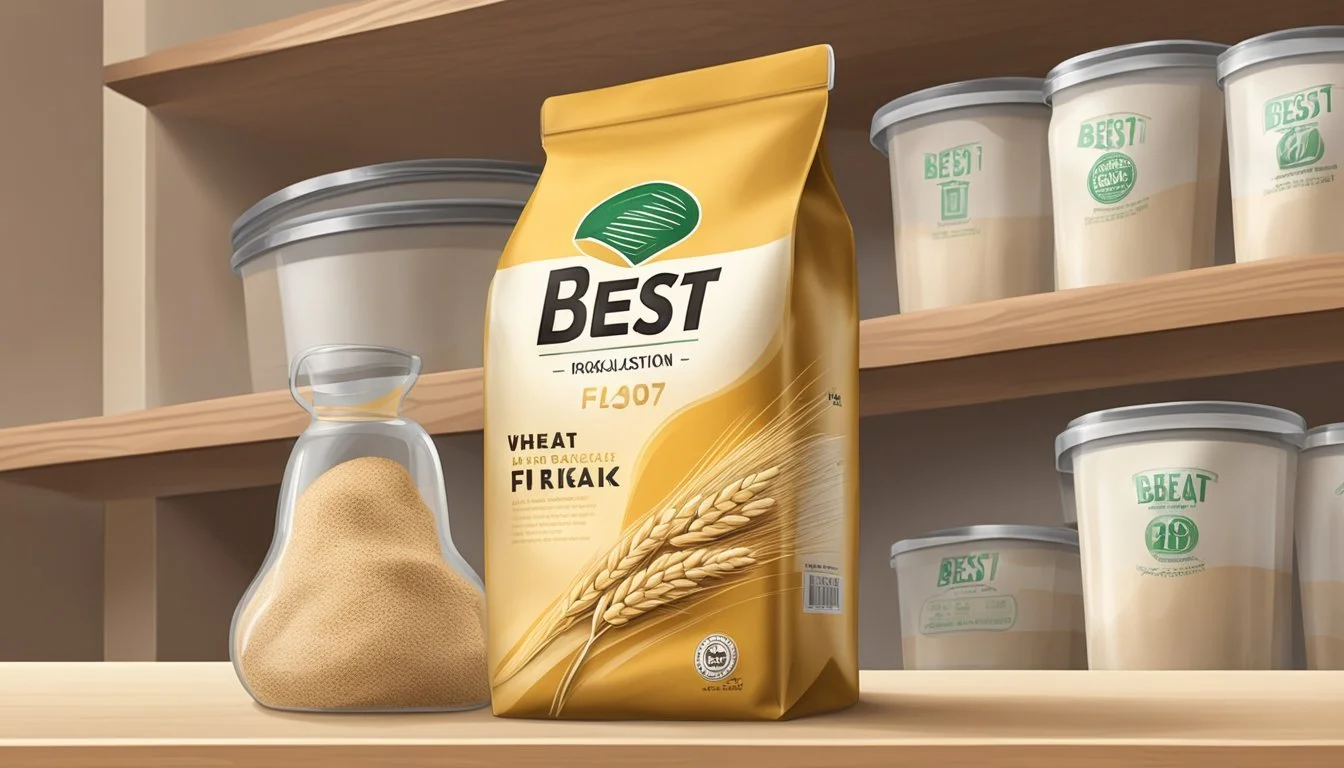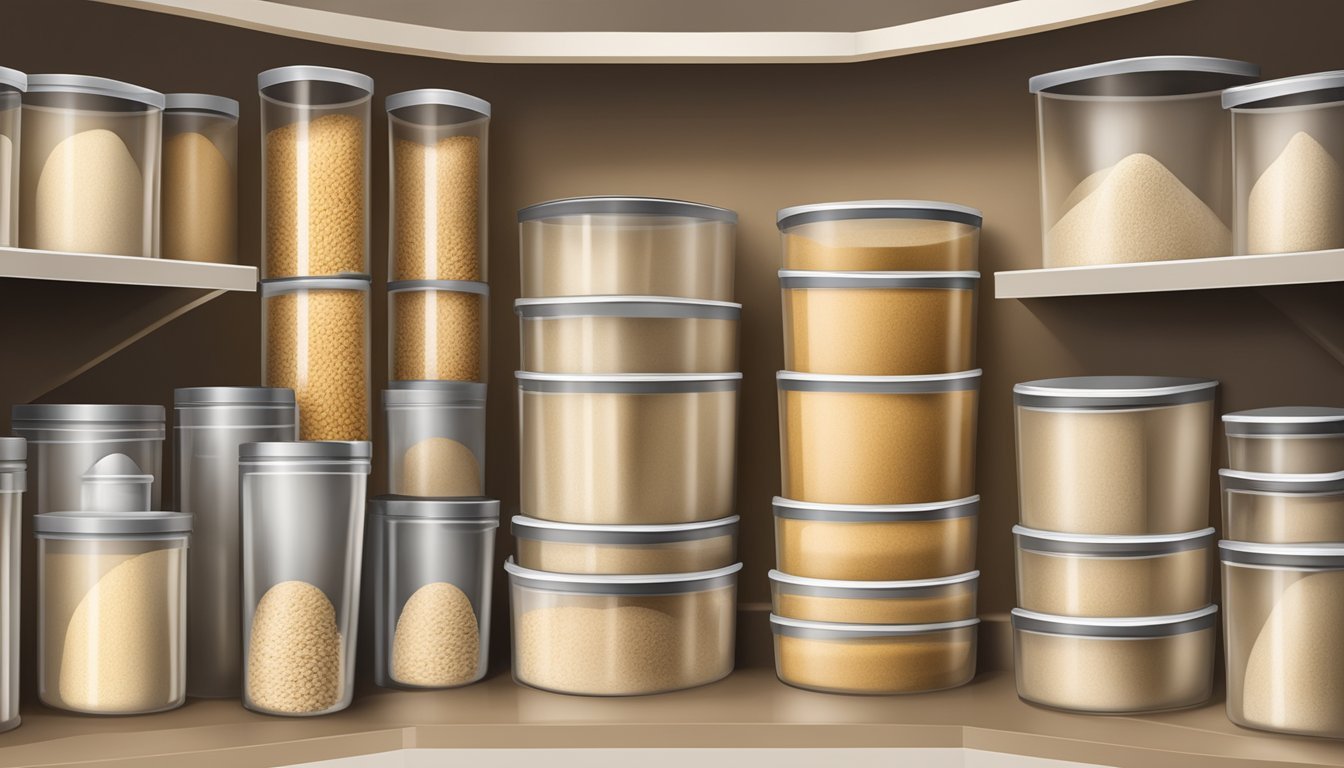How Long Does Wheat Gluten Flour Last?
Shelf Life and Storage Tips
Vital wheat gluten, a high-protein flour often used to enhance the elasticity and chewiness of dough, is valued for its extended shelf life. Unlike regular flour, which may start to degrade after a few months, unopened vital wheat gluten can last between seven to ten years when stored in optimal conditions. This longevity is due to its low moisture content, which makes it less prone to spoilage.
Once opened, however, the shelf life of vital wheat gluten decreases to between six months to a year if refrigerated. For those who bake frequently, this extended usability period allows them to keep vital wheat gluten on hand without frequent purchasing. It is also an asset for long-term storage, appealing to bulk buyers and those invested in food preparedness.
Proper storage plays a critical role in extending the life of vital wheat gluten flour (how long does wheat gluten flour last?). Keeping it away from bright light, ensuring the package is well-sealed, and storing it in cool temperatures help maintain its quality. Freezing can also prolong its shelf life beyond the typical refrigerated span. It's important for consumers to recognize that while the product is durable, it's not impervious to degradation, and storage conditions need to be maintained to ensure longevity.
Understanding Wheat Gluten Flour
Wheat gluten flour, often referred to as vital wheat gluten flour, is a high-protein flour that is derived from wheat. It is specifically produced by hydrating wheat flour to activate the gluten (the protein part of the flour), and then processing it to remove everything except that protein.
This flour is primarily composed of wheat protein, particularly glutenin and gliadin, which are the two main proteins that form gluten. When water is added to wheat gluten flour, these proteins link together, creating the elastic texture that is vital for the structure and chewiness in baked goods such as bread.
In comparison to other types of flour like all-purpose flour, whole wheat flour, or self-rising flour, wheat gluten flour has a significantly higher protein content. Where all-purpose flour typically contains 10-12% protein, wheat gluten flour can often have a protein content as high as 75-80%.
The use of whole grain flours, incorporating whole wheat, bran, and germ, offers different nutritional benefits, but wheat gluten flour is mostly used for its functional properties that influence texture and elasticity.
Gluten-free diet adherents, often those with celiac disease or non-celiac gluten sensitivity, avoid wheat gluten flour due to its high gluten content.
This specific flour serves a vital role in vegan and vegetarian diets as a meat substitute, known as seitan, due to its texture and protein content. It's also added to other wheat-based flours to boost their protein levels, which can improve the texture and rise of baked products.
Shelf Life Fundamentals
Understanding the shelf life of vital wheat gluten is key for maintaining its quality and nutritional value. Shelf life refers to the period a product remains at optimal quality under appropriate storage conditions. The expiration or best-by date is not an absolute marker of safety, but rather the manufacturer's estimate of product integrity.
Vital Wheat Gluten:
Unopened: Typically lasts 7-10 years.
Opened: Should ideally be used within 6-12 months.
_For _expired vital wheat gluten:
It may lose effectiveness but isn't necessarily unsafe.
Check for strange odors or discoloration as signs of spoilage.
Effective storage entails:
Keeping the product in a cool, dark place, such as a pantry.
Refrigeration can extend freshness post-opening.
Freezer storage is suitable for long-term preservation.
Use-By and Best-By Dates:
These provide guidance on expected product quality.
However, flour products like wheat gluten may remain usable beyond these dates, especially if stored correctly.
A note on expired flour:
Whole grain flours spoil faster due to higher oil content.
Wheat gluten, while more stable, should also be scrutinized past its best-by date.
Entities such as ‘expiration date,’ 'best-by,' and 'expired flour’ help consumers gauge product freshness, but the shelf life of vital wheat gluten is notably extensive, provided that storage conditions are optimal.
Optimal Storage Conditions
Maintaining the freshness and extending the longevity of wheat gluten flour greatly depends on how it is stored. The optimal conditions can prevent spoilage and preserve the flour's quality.
Pantry Storage
Wheat gluten flour should be stored in a cool, dry place, such as a dark pantry. The ideal temperature for pantry storage is below 60°F (15°C), which slows down the degradation process.
Refrigeration & Freezing
For long-term preservation, storing wheat gluten flour in the fridge or freezer is advisable. Refrigeration and freezing can significantly extend the flour's shelf life by reducing exposure to heat and temperature fluctuations.
Packaging and Containers
Flour should be kept in an airtight container to prevent exposure to oxygen and moisture. Suitable packaging materials include plastic, glass, or metal containers, and even plastic bags for short-term storage.
Storage Life Extension
Using preservatives or oxygen absorbers can further extend the shelf life of wheat gluten flour. However, it's essential to ensure that any added substances are food-grade and safe for consumption.
Pantry Staple Management
Regularly label and check your pantry staples. Note the opened and unopened dates of wheat gluten flour packages to manage rotation effectively.
Specialty Flour Considerations
Flours like nut flour, coconut flour, and gluten-free flour tend to have higher fat content, making them more susceptible to rancidity. Thus, they often require refrigeration.
Commercial Flour Attributes
Flour purchased from the supermarket can contain preservatives that increase its shelf life. Even so, following proper storage techniques remains crucial.
Signs of Spoilage
Be aware of changes in color, texture, and odor. A musty or sour smell, discoloration, and a clumpy texture can indicate spoilage.
Health and Safety Concerns
Mold growth, bacteria, and bug infestations are health hazards. Discard any flour that shows these signs of spoilage to avoid potential health risks.
Practical Usage Tips
When using wheat flour in baking, precise temperature control and ingredient freshness influence the final product. Therefore, proper storage is essential for optimal rising, taste, and flavor.
Maximizing Flour Longevity
Minimize flour's exposure to heat, light, and moisture, which are the primary agents of spoilage. Storing in a consistent environment helps in preserving the freshness and nutritive values.
Alternatives and Substitutes
If gluten content is not a priority, consider using alternatives like gluten-free flour when the preferred flour type is not available. However, this may affect the texture and rising properties in baked goods.





